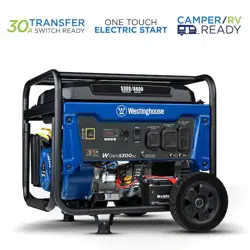Loading ...
Loading ...
Loading ...

22 | Westinghouse Outdoor Power Equipment, LLC
BATTERY MAINTENANCE
The 12V 1.2 AH Lithium Ion battery shipped with the
generator has been fully charged. A battery may lose some
charge when not in use for prolonged periods of time.
Note: Once started, the generator will charge the battery
after 30 minutes of use.
BATTERY REPLACEMENT
Keep battery terminals covered at all times. The
generator is shipped with a lithium ion (Li-Ion) battery.
Exposed metal positive and negative terminals can
short-circuit when they come into contact with metal
objects, igniting the cell’s internal materials and forcibly
expelling burning contents, resulting in res, explosions,
serious injuries and even death.
1. Loosen and remove the bolts securing the battery hold-
down plate and remove the plate.
2. Disconnect the quick-connect plugs and remove the
battery from the unit.
3. Disconnect the quick-disconnect cable leads from the
battery.
4. On the replacement battery, connect the white (-) quick-
connect cable to the battery negative terminal. Slide the
rubber boot over the connection hardware.
5. Connect the red (+) quick-connect cable to the battery
positive terminal. Slide the rubber boot over the
connection hardware.
6. Install the battery into the generator. Reinstall the battery
hold-down plate and tighten the bolts.
7. Connect the quick-connect plug.
NOTICE
Dispose of the used battery properly according to the
guidelines established by your local or state government.
STORAGE
Proper storage preparation is required for trouble-free
operation and generator longevity.
NOTICE
Gasoline stored for as little as 30 days can deteriorate,
causing gum, varnish, and corrosive buildup in fuel lines,
fuel passages, and the engine. This corrosive buildup
restricts the ow of fuel, which can prevent the engine
from starting after a prolonged storage period. The use
of fuel stabilizer signicantly increases the storage life of
gasoline. Full-time use of fuel stabilizer is recommended.
Follow the manufacturer’s instructions for use.
STORAGE TIME RECOMMENDED PROCEDURE
Less than 1 month No service required.
2 to 6 months
Fill with fresh gasoline and add
gasoline stabilizer. Drain the
carburetor oat bowl.
6 months or longer
Drain the fuel tank and carburetor
oat bowl.
SHORT TERM STORAGE
• Allow the generator to cool a minimum of 30 minutes
before storage.
• Replace all protective covers on the generator control
panel.
• Wipe the generator with a moist cloth. Clean any debris
from the mufer cooling vents.
• Store the generator in a well-ventilated, dry location
away from sparks, open ames, pilot lights, heat, and
other sources of ignition such as areas with a spark-
producing electric motor or where power tools are
operated.
• DO NOT store the generator, or gasoline near furnaces,
water heaters, or any other appliances that produce
heat or have automatic ignitions.
• With the engine and exhaust system cool and all
surfaces dry, cover the generator to keep out dust. DO
NOT use a plastic sheet as a dust cover. Non-porous
materials trap moisture and promote rust and corrosion.
LONG TERM STORAGE
Even properly stabilized fuel can leave residue and cause
corrosion if left long term. If storing the generator for two to
six months, drain the oat bowl to prevent gum and varnish
buildup in the carburetor.
MAINTENANCE
Loading ...
Loading ...
Loading ...
